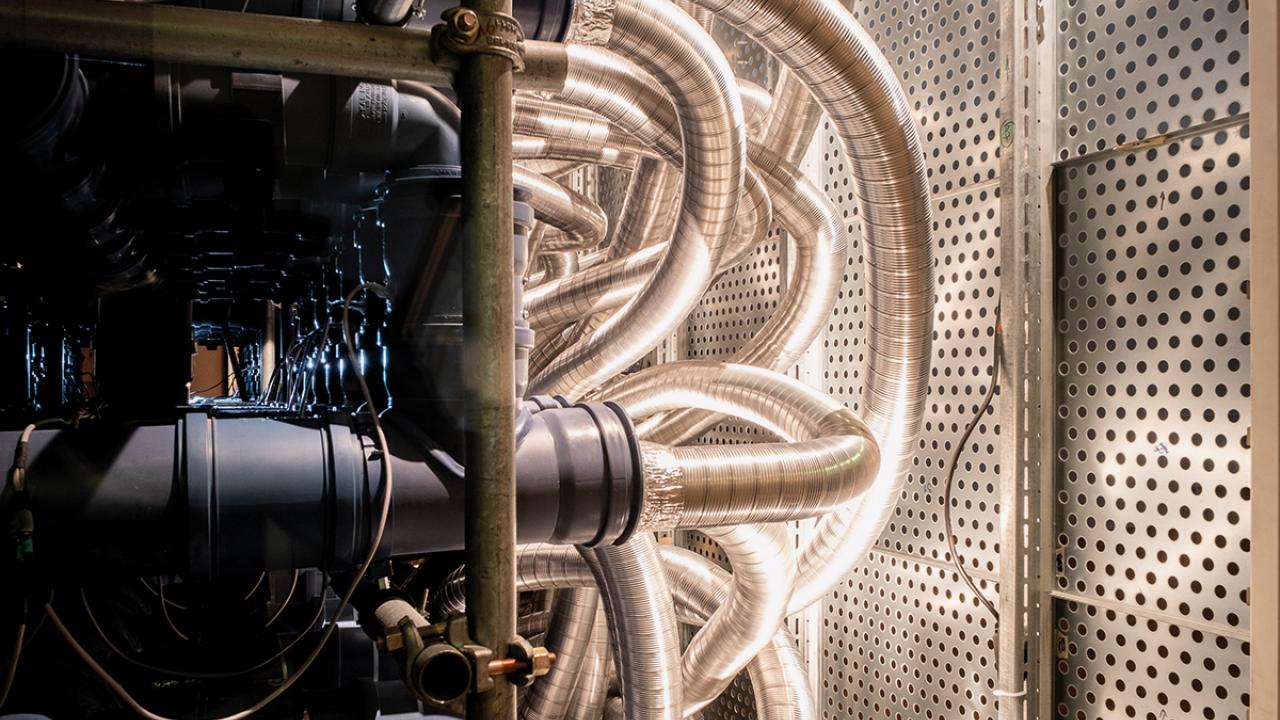Fusion Cuisine
DESTECentre for Contemporary Art, Athens, Greece
DESTECentre for Contemporary Art, Athens, Greece

These days an exhibition about art made by women is likely to be greeted with some scepticism. The debate on multiculturalism has revealed that in considering women's issues and women's art gender alone offers too narrow a perspective unless issues of race, cultural difference and nationality are also taken into consideration.
Curated by Katerina Gregos, 'Fusion Cuisine' attempts to reveal some of the multiple layers that define post-feminist art. In particular, it strives to dismantle an essentialist perspective, and to show that 'feminisms' and the idea of 'difference within difference' have eroded the idea of a universal feminist agenda. Echoing the playfulness of the exhibition's title, the choice of artists aimed to be non-dogmatic, resulting in a mix that lent the exhibition a degree of sophistication but which may have deprived it of a certain edge. Still, the visual variety of the show was absorbing: the shifts of mood, for example, swung between the gloomy ennui of Eliza Jackson's Pasta Flora (1998-2002) a film shot on Super 8, to Tracey Emin's defiant self-portrait, Good Smile, Great Come (2000), a photograph of the artist laughing, her legs spread, stuffing money in her crotch.
Many contemporary feminist artists do not so much create ruptures with the past as acknowledge a debt to a previous generation. This is one of the aspects that made 'Fusion Cuisine' as much a record of contemporary art by women as a retrospective of some of the fundamental ideas that have informed feminist art. For example, Patty Chang's physically exhausting performances create powerful associations between the interest in process and the gender politics so prevalent in the 1970s. In Melon (At a Loss) (1998) Chang is shown slicing her breast to reveal a melon, which she then consumes in a dispassionate but self-negating act. Also harking back to performance and process art is the videotaped, ceremonial-like performance The Burden of Guilt (1999), in which Tania Bruguera uses her own body to refer to history, trauma and collective memory.
Transforming domesticity and personal experience into political gestures has long been a feminist practice, one employed here by Janine Antoni and Catherine Opie, whose depictions of lesbian relationships challenge dominant heterosexual assumptions. In her photographic triptych Mom and Dad (1999) she portrays her parents in roles that play with traditional ideas of male and female.
The influence of commodity culture and representational codes in structuring gender roles emerges in Despina Meimaroglou's work, in which the idealized image of a Barbie doll is given ageing facial features to expose the dictates of beauty stereotypes. The ways in which consumerism conditions women also comes up in Sylvie Fleury's gold-plated shopping cart rotating on a mirrored pedestal and in Liza Lou's mocking but pensive Super Sister (1999), a gun-wielding life-size dummy studded with gold beads.
Lisa Yuskavage's mock salon-style paintings of a reclining female nude touch on another of feminism's preoccupations - the exclusion of women artists from art history and the depiction of women as objects of desire. In a similar vein Hilary Harkness questions the relationship between sexuality and power in her paintings of an all-female team of industrial workers.
Lee Bull's Cyborgs (2002), sculptures that resemble hybrids of women and machines, consider the effects of technology in conditioning sexuality. So does Kiki Seror's work, whose Duratrans light-boxes feature fragments of sexually explicit words exploring the world of cybersex and the ways that information technology shapes sexuality.
Although much of the work in 'Fusion Cuisine' explores similar territory, it comes at the ideas from a wide range of angles. Maria Papadimitriou's 'sucksexfull', stencilled in a black font to resemble an advertising hoarding, makes fun of stereotypes about sexuality and femininity, but also of women for passively adhering to such stereotypes. With analogous brashness and ambiguity Camilla Dahl's Champagne Bar (2001), a sink-like appliance from which champagne is served, plays on the idea of servility and sexuality. Monica Bonvicini's installation of sleek leather-bound chairs explores design and architecture in relationship to gender; Lina Theodorou attacks traditional gender roles by interrupting the flow of a video showing middle-aged women shopping at the open-air food market with phrases full of violent connotations.
Cultural complexities and racial difference in respect to gender are topics raised in Elahe Massumi's video A Kiss is not a Kiss (2000), which explores the story of a girl living in India who is forced into prostitution, and in the visual collages of Fatimah Tuggar, in which the artist creates a playful reversal of gender roles in the West and in Third World countries. Jitka Hanzlova's elegant photographs explore the lives of women of different ages, social backgrounds, ethnic origins and urban surroundings.
Perhaps the most poetic work in the exhibition was Cosima von Bonin's installation The Cousins (2000), a ranch fence made of Laura Ashley fabric, set against the background of an embroidered painting in which the figures of two cowboys are barely delineated. Von Bonin touches on multiple issues in a work of visual strength and subtlety. Like much of the best post-feminist art, it is at once cool and emotional, intricate and direct.
























